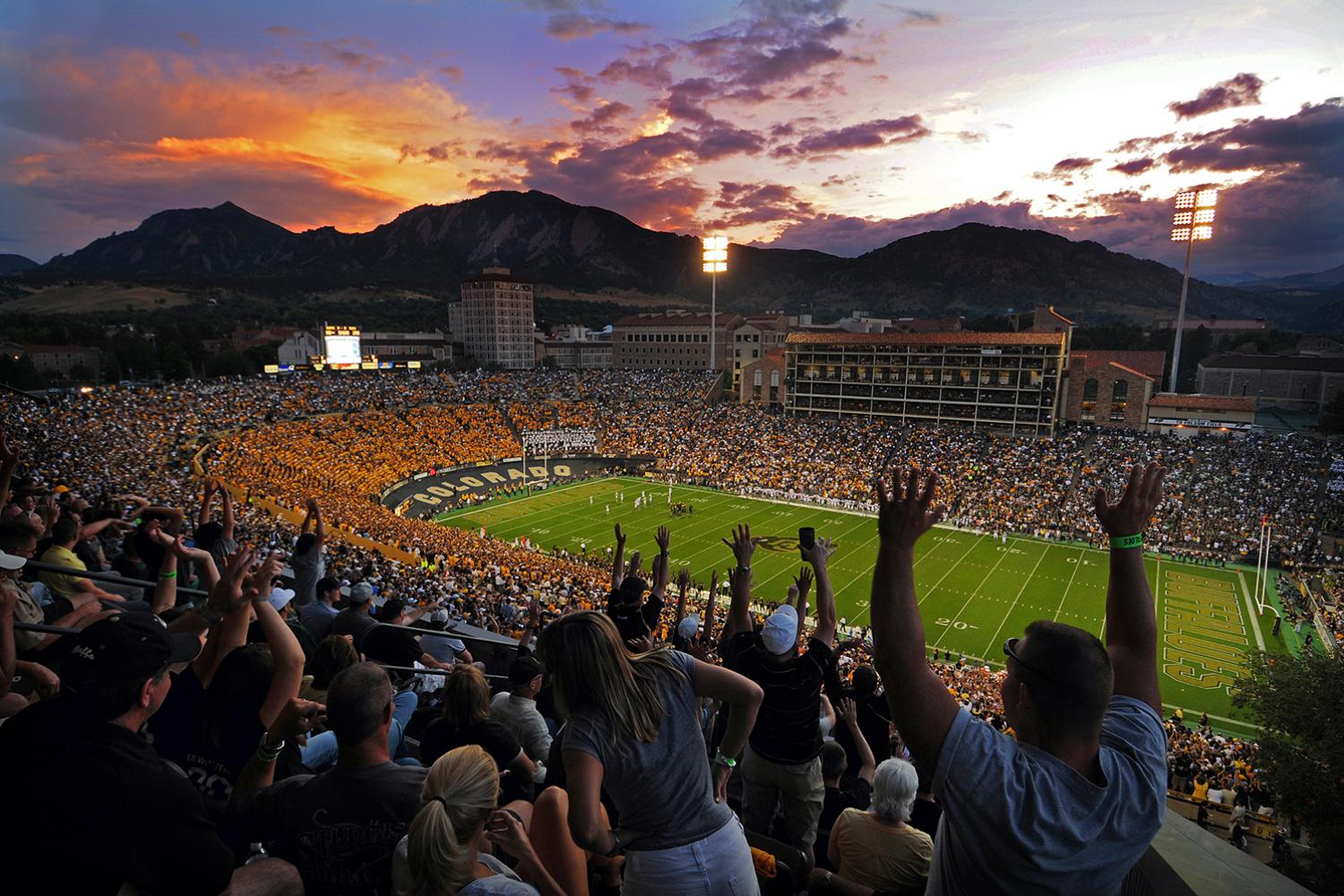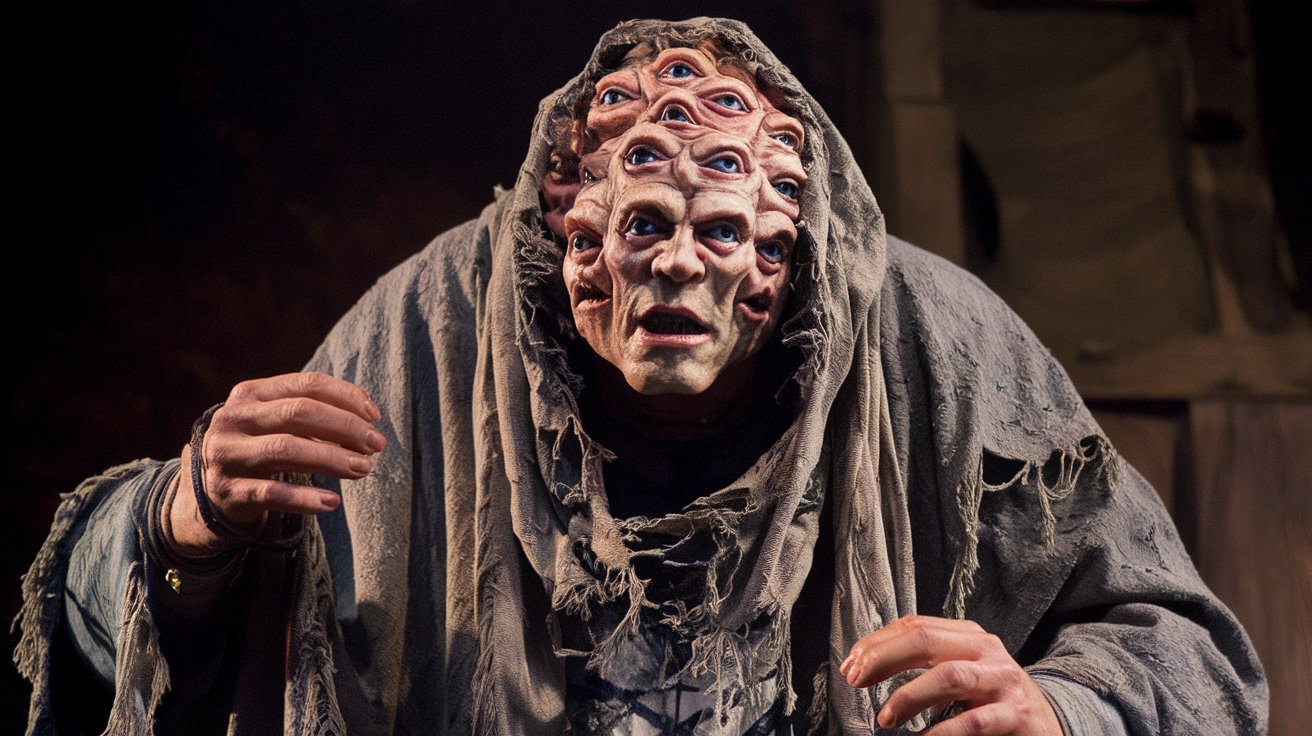
Why is Folsom Field so special? Folsom Field, located at the University of Colorado Boulder, is more than just a football stadium. Opened in 1924, it has a rich history and unique features that make it stand out. Named after legendary coach Frederick Folsom, the stadium has seen numerous expansions, growing from an initial capacity of 26,000 to its current 50,183. Its horseshoe shape, high elevation at 5,360 feet, and natural grass field add to its charm. The live buffalo mascot, Ralphie, charging ahead of the team since 1967, creates an electrifying atmosphere. Folsom Field also prides itself on being the first zero-waste stadium in the NCAA.
Key Takeaways:
- Folsom Field, home of the Colorado Buffaloes, has a rich history and unique features, including its horseshoe shape, natural grass field, and the beloved tradition of Ralphie's run.
- With a capacity of 50,183, Folsom Field's elevation of 5,360 feet and zero-waste initiative make it a challenging and environmentally conscious stadium, while its rich legacy and traditions add excitement to every game.
Location and Name
Folsom Field, a historic stadium, has been the home of the Colorado Buffaloes since 1924. Its name and location hold significant meaning.
- Location: Folsom Field is situated at 2400 Colorado Avenue, Boulder, Colorado, bordering the majestic Boulder Mountain Park.
- Name Origin: The stadium was named after Frederick Folsom, a legendary University of Colorado coach who led the Buffs for 15 seasons from 1895 to 1902 and 1908 to 1915.
- Former Name: Before being officially renamed Folsom Field in 1944, the stadium was unofficially called Norlin Stadium against the wishes of university president George Norlin.
Capacity and Structure
The stadium has evolved over the years, both in capacity and structure, to accommodate more fans and provide a better experience.
- Opening Year: Folsom Field opened on October 11, 1924, with a capacity of 26,000 spectators.
- Capacity Evolution: Over the years, the seating capacity has increased significantly. It was 26,000 in 1924, 45,000 in 1956, 50,516 in 1967, 52,005 in 1976, and currently stands at 50,183.
- Horseshoe Shape: The stadium is uniquely shaped like a horseshoe, running in the traditional north–south configuration and opening to the north.
- Dal Ward Athletic Center: Located at the north end of the stadium, this center is named after Dal Ward, a 1950s head coach of the Buffaloes.
Unique Features
Folsom Field boasts several unique features that set it apart from other college football stadiums.
- Elevation: Folsom Field sits at an elevation of 5,360 feet (1,635 meters) above sea level, making it one of the highest stadiums in FBS college football.
- Natural Grass: The playing field has returned to natural grass since 1999 after a 28-year stint with AstroTurf. The natural grass surface includes bio-thermal heating, drainage, and a sub-air system, which cost $1.2 million to install.
- AstroTurf Era: From 1971 to 1998, the field was covered with AstroTurf. The first game played on the new surface was against Wyoming on September 18, 1971.
- Renovations and Expansions: Major expansions and renovations have taken place over the years. In 1956, the height of the stadium was increased, and in 1967, 6,000 more seats were added by removing the running track. The old wooden bleachers were replaced with aluminum ones in 1976, raising the capacity to 52,005.
- Suite and Club Seating: In 2003, suites and club seating were added to the east side of the stadium, raising the capacity to 53,750. However, since then, 137 seats with obstructed views have been removed, lowering the seating capacity to 53,613.
- Zero-Waste Initiative: In 2008, Folsom Field became the first "zero-waste" stadium in the NCAA by implementing a rigorous recycling and composting program.
Traditions and Culture
The traditions and culture at Folsom Field create a unique and exciting atmosphere for fans and players alike.
- Ralphie’s Run: Since 1967, a live buffalo named Ralphie has charged ahead of the CU team as it takes the field. This tradition is one of college football’s greatest and involves five handlers who must try out, complete physical exams, driving tests, and background checks before being selected.
- Ralphie’s Handlers: The handlers dedicate approximately 30 hours per week to Ralphie’s care and the school’s live mascot program. Ralphie is a female buffalo because males are much bigger and more easily excitable.
- Student Section: The student section, known as the “CUnit,” is seated on Folsom Field’s east side and generates most of the crowd’s energy. The students are loud, engaged, and thrilled when good fortune finds the CU gridders.
- Golden Buffalo Marching Band: The students also sing along with the Golden Buffalo Marching Band, adding to the spirited atmosphere of the games.
- Average Attendance: Between 2015 and 2019, the Buffs drew home crowds that filled Folsom at an average of 91 percent. Only Oregon (102.8%), Utah (101.2%), Washington (94.9%), and Washington State (92.7%) filled their stadiums to higher percentages in the Pac-12 during that time.
Seating and Amenities
Folsom Field offers a variety of seating options and amenities to enhance the fan experience.
- Seating Arrangements: The stadium offers diverse seating arrangements, including VIP seating, designated student sections, east/west side stands, and more. Sections 101, 102, and 103 are typically chosen by the visiting team’s fans and band due to their accessibility.
- Touchdown Club and Rooftop Terrace: The Touchdown Club and Rooftop Terrace provide premium seating options with excellent views of the field. These areas offer a unique experience for fans, with the Rooftop Terrace offering a panoramic view of the stadium and surrounding mountains.
- Concession Stands: Concession stands are available in Balch Fieldhouse, where fans can enjoy food while watching the game. The stadium also has a clear bag policy to ensure security and efficiency.
- Parking Options: Parking options include the CU Events Center garage, which costs $30 per car, and CU’s East Campus east of the stadium on Colorado Avenue, which costs $15 per car. Shuttle buses run frequently between the parking lots and the stadium.
- Accessibility: Getting to Folsom Field is easier than navigating its walkways and concourses. The Regional Transportation District (RTD) operates several bus lines from Denver to Boulder, with several bus stops at or near Folsom Field. Fans can also reach the stadium by bike or on foot from various parts of Boulder.
- Bike-Sharing Program: The City of Boulder has an excellent bike-sharing program that recently added 100 electric bikes to its existing 300-bike fleet. This makes it convenient for fans to travel to the stadium by bike.
Historic Events and Legacy
Folsom Field has a rich history of hosting significant events and has left a lasting legacy in college football.
- Historic Events: Folsom Field has hosted numerous historic events, including a rock concert in 1977 featuring John Sebastian, Fleetwood Mac, Firefall, and Bob Seger, which drew the largest crowd in the stadium’s history.
- First Game: The first game played at Folsom Field was on October 11, 1924. Since then, it has been the continuous home of Buffaloes football, with a home record of 323–181–14 (.637) through the 2021 season.
- Fred Folsom’s Legacy: Coach Fred Folsom led the Buffs for 15 seasons, compiling an overall record of 78–24–2 (.760). He is remembered as one of the greatest coaches in CU history, and the stadium was renamed in his honor in 1944.
- Fred Folsom’s Coaching Tenure: During his tenure, Folsom coached the Buffs from 1895 to 1902 and 1908 to 1915. His legacy extends beyond his coaching career, as he is also remembered for his contributions to the development of college football in Colorado.
- University President George Norlin: Despite being named unofficially as Norlin Stadium, university president George Norlin did not want the field to bear his name. This reflects the complex history and naming conventions of the stadium over the years.
Ralphie’s Handlers and Tradition
The tradition of Ralphie’s run and the dedication of her handlers add a unique and exciting element to each game at Folsom Field.
- Ralphie’s Handlers Selection Process: The selection process for Ralphie’s handlers is rigorous. They must try out, complete physical exams, driving tests, and background checks before being selected. This ensures that only the most qualified individuals handle Ralphie during games and events.
- Ralphie’s Care: Ralphie’s handlers dedicate a significant amount of time to her care. They spend approximately 30 hours per week ensuring that Ralphie is healthy and ready for her runs during games and other events.
- Ralphie’s Tradition: Ralphie’s run is a beloved tradition that dates back to 1967. It adds a unique and exciting element to each game, making Folsom Field stand out among other college football stadiums.
Home Record and Elevation
Folsom Field’s home record and elevation contribute to its reputation as a challenging and iconic stadium.
- CU Buffs’ Home Record: Through the 2021 season, the Buffs have a home record of 323–181–14 (.637). This reflects the team’s strong performance at Folsom Field over the years.
- Folsom Field’s Elevation: The stadium’s elevation of 5,360 feet (1,635 meters) above sea level makes it one of the highest stadiums in FBS college football. This unique elevation contributes to the challenging conditions that players face during games.
AstroTurf and Natural Grass
The transition from AstroTurf to natural grass has been a significant change in the history of Folsom Field.
- AstroTurf Installation: The first game played on AstroTurf at Folsom Field was against Wyoming on September 18, 1971. This marked the beginning of a 28-year period where the field was covered with synthetic turf.
- AstroTurf Replacement: After 28 years of using AstroTurf, Folsom Field returned to natural grass in the spring of 1999. The project included bio-thermal heating, drainage, and a sub-air system, which cost $1.2 million to install.
Renovations and Zero-Waste Initiative
Folsom Field has undergone several renovations and has implemented a zero-waste initiative to improve the stadium and its environmental impact.
- Folsom Field’s Renovations: Over the years, Folsom Field has undergone several renovations and expansions. These have included adding suites and club seating in 2003, increasing the capacity to 53,750, and later reducing it to 53,613 by removing seats with obstructed views.
- Folsom Field’s Zero-Waste Initiative: In 2008, Folsom Field became the first "zero-waste" stadium in the NCAA by implementing a rigorous recycling and composting program. This initiative has significantly reduced waste generated during events held at the stadium.
Seating Arrangements and Concessions
The diverse seating arrangements and concession options at Folsom Field enhance the overall fan experience.
- Folsom Field’s Seating Arrangements: The stadium offers diverse seating arrangements, including VIP seating, designated student sections, east/west side stands, and more. Sections 101, 102, and 103 are typically chosen by the visiting team’s fans and band due to their accessibility.
- Folsom Field’s Concession Stands: Concession stands are available in Balch Fieldhouse, where fans can enjoy food while watching the game. The stadium also has a clear bag policy to ensure security and efficiency.
Parking and Accessibility
Folsom Field provides various parking options and is easily accessible by different modes of transportation.
- Folsom Field’s Parking Options: Parking options include the CU Events Center garage, which costs $30 per car, and CU’s East Campus east of the stadium on Colorado Avenue, which costs $15 per car. Shuttle buses run frequently between the parking lots and the stadium.
- Folsom Field’s Accessibility: Getting to Folsom Field is easier than navigating its walkways and concourses. The Regional Transportation District (RTD) operates several bus lines from Denver to Boulder, with several bus stops at or near Folsom Field. Fans can also reach the stadium by bike or on foot from various parts of Boulder.
- Folsom Field’s Bike-Sharing Program: The City of Boulder has an excellent bike-sharing program that recently added 100 electric bikes to its existing 300-bike fleet. This makes it convenient for fans to travel to the stadium by bike.
Historic Events and First Game
Folsom Field has hosted numerous historic events and has a long-standing tradition of Buffaloes football.
- Folsom Field’s Historic Events: Folsom Field has hosted numerous historic events, including a rock concert in 1977 featuring John Sebastian, Fleetwood Mac, Firefall, and Bob Seger, which drew the largest crowd in the stadium’s history.
- Folsom Field’s First Game: The first game played at Folsom Field was on October 11, 1924. Since then, it has been the continuous home of Buffaloes football, with a home record of 323–181–14 (.637) through the 2021 season.
Fred Folsom’s Legacy and Coaching Tenure
Fred Folsom’s legacy and coaching tenure have left a lasting impact on the University of Colorado and Folsom Field.
- Fred Folsom’s Legacy: Coach Fred Folsom led the Buffs for 15 seasons, compiling an overall record of 78–24–2 (.760). He is remembered as one of the greatest coaches in CU history, and the stadium was renamed in his honor in 1944.
- Fred Folsom’s Coaching Tenure: During his tenure, Folsom coached the Buffs from 1895 to 1902 and 1908 to 1915. His legacy extends beyond his coaching career, as he is also remembered for his contributions to the development of college football in Colorado.
- University President George Norlin: Despite being named unofficially as Norlin Stadium, university president George Norlin did not want the field to bear his name. This reflects the complex history and naming conventions of the stadium over the years.
Ralphie’s Handlers and Tradition
The tradition of Ralphie’s run and the dedication of her handlers add a unique and exciting element to each game at Folsom Field.
- Ralphie’s Handlers Selection Process: The selection process for Ralphie’s handlers is rigorous. They must try out, complete physical exams, driving tests, and background checks before being selected. This ensures that only the most qualified individuals handle Ralphie during games and events.
- Ralphie’s Tradition: Ralphie’s run is a beloved tradition that dates back to 1967. It adds a unique and exciting element to each game, making Folsom Field stand out among other college football stadiums.
Folsom Field: A Century of Legacy
Folsom Field stands as a testament to the rich history and vibrant traditions of the University of Colorado Boulder. From its opening in 1924 to its current status as a zero-waste stadium, it has evolved while maintaining its unique charm. The horseshoe shape, elevation of 5,360 feet, and the return to natural grass in 1999 highlight its distinctive features. Traditions like Ralphie’s Run and the Golden Buffalo Marching Band add to the electrifying atmosphere. The Dal Ward Athletic Center and the Touchdown Club offer premium experiences for fans. With a seating capacity of 50,183, Folsom Field continues to be a beloved home for the Colorado Buffaloes. As it approaches its centennial, Folsom Field remains a symbol of college football excellence and the enduring spirit of the Buffaloes.
Frequently Asked Questions
Was this page helpful?
Our commitment to delivering trustworthy and engaging content is at the heart of what we do. Each fact on our site is contributed by real users like you, bringing a wealth of diverse insights and information. To ensure the highest standards of accuracy and reliability, our dedicated editors meticulously review each submission. This process guarantees that the facts we share are not only fascinating but also credible. Trust in our commitment to quality and authenticity as you explore and learn with us.


